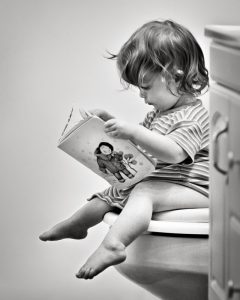
Potty Training Basics Your Toddler Will Enjoy
 The average child in the United States is potty trained by the age of two or three. Parents often think the best method is to force this important benchmark, but a relaxed approach to getting your child to use the washroom like a grown-up is best. You’ll need to know when they’re ready to start training and being aware of a few cues is an excellent way to know when that time has come.
The average child in the United States is potty trained by the age of two or three. Parents often think the best method is to force this important benchmark, but a relaxed approach to getting your child to use the washroom like a grown-up is best. You’ll need to know when they’re ready to start training and being aware of a few cues is an excellent way to know when that time has come.
When your toddler can follow some simple verbal instructions, it’s time to start thinking about potty training. When she can stay dry in two hour intervals and wakes up that way after a nap is another good indicator and when his facial expressions tell you he needs to go, you’re ready to start potty training.
Girls are generally potty trained faster than boys and things might go quicker if your little one has an older sister to imitate. Keep in mind, if she’s just started daycare or you’re going through another big change like a move, it might be better to hold off the potty training until things settle down.
Potty Times
Patience is a virtue where potty training girls and boys is concerned and parents need to remember to take their time because no child will ever graduate from high school in diapers. Leaving the bathroom door open also gives your little girl a chance to see how Mommy uses the big toilet. Adding stickers to a wall chart near the potty for the times when she needs to pee will keep your daughter interested in the process.
You might want to read an extra bedtime story after the first time your little girl successfully uses the potty to encourage more of the same, but it’s not a good idea to make a big deal every time she successfully uses the potty to prevent her from feeling nervous about all the attention. Letting her spend some time around the potty naked will help to make an association. Putting a few of her toys in close proximity might mean an occasional accident on the floor, but you can cover any rugs with plastic during this part of the process.
As you might expect, boys present a slightly different set of challenges than girls and they actually take a little longer to potty train. Buying a potty that your child can call his own is a good opening step. These are usually less daunting than a full-size toilet. Next, you’ll want to figure out some specific words to use consistently for pee and poo. A big part of how children learn is by imitation, so letting your son follow his father into the washroom to see how Daddy does his business will give him a good idea of what’s expected of him.
Floating Cereal
Once the potty has been sitting in your washroom for a short time so your son can get used to it, you can let him sit on it with his clothes on so he’ll get comfortable. Eventually, you’ll be able to place him on the potty without a diaper several times a day or when he gives you an indication he needs to go.
Although he’ll be sitting on the potty for both pee and poo at first, floating a piece of cereal in the water and letting him stand for some target practice is a fun way to show him how you want things to work.
Read more info like this at All My Children.
Author: Rob Starr